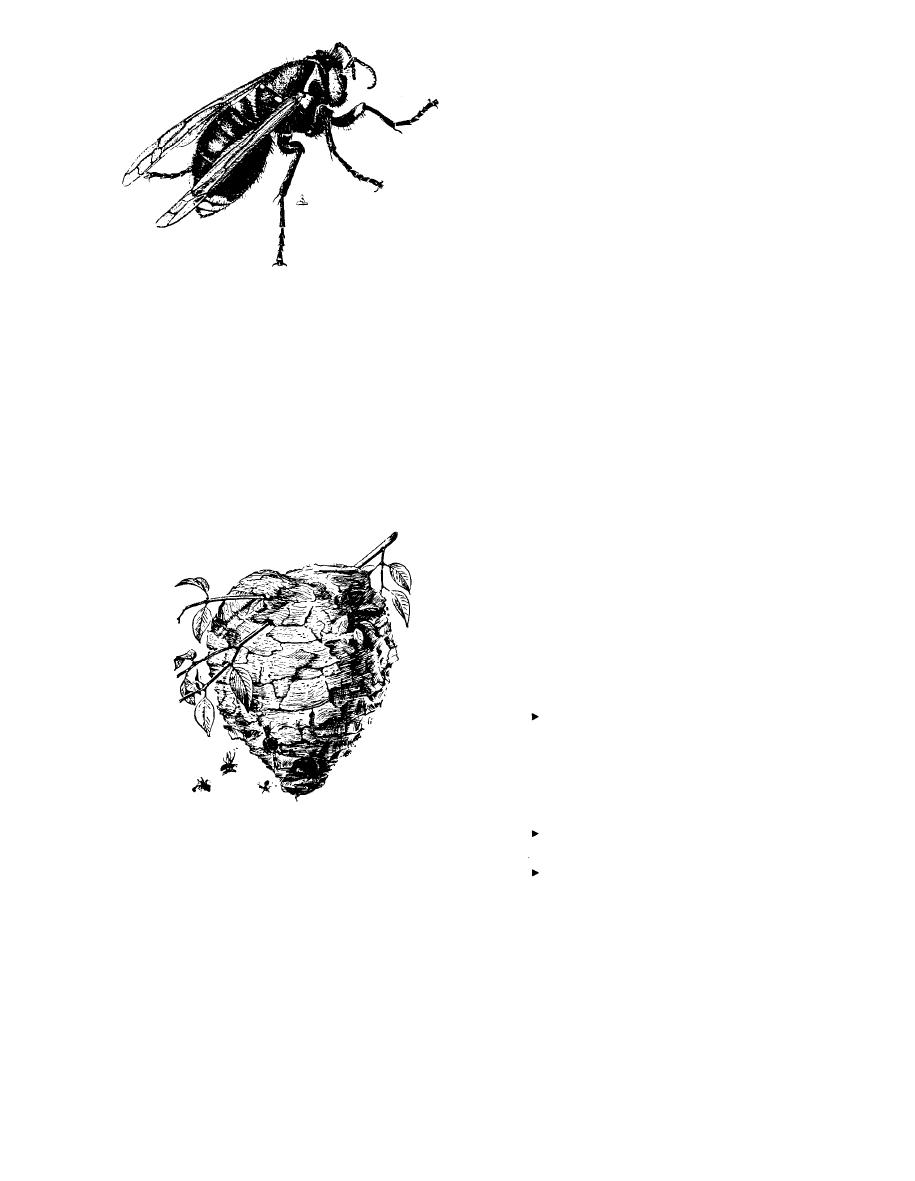

Custom Search
|
|

|
||
 yellowjackets for larval food. They attach their nests
to low shrubs or high in trees or on buildings.
Although Aerial colonies can have four to seven
hundred workers at one time, their food gathering
habits do not routinely bring them in contact with
humans. Large nests are often discovered only after
leaves have fallen and the nests are exposed -- both to
view and to nature's elements that finally bring about
their disintegration.
Underground Nesters
Bald Faced hornet
The stinging wasp, often identified as a
yellowjacket, is black and yellow. Primarily yellow
The Aerial yellowjacket is found in the west,
bands cover a dark abdomen. These species are in the
Canada, and east ( but not in the central and southern
genus Vespula.
states). This species begins its nest in March or April
They begin their nests like the aerial nesters --
and is finished and no longer active by the end of July.
with an enveloped small comb made of wood fiber
Their nests, usually attached to building overhangs are
paper. Only these nests are started in soil depressions,
smaller and more round than those of other species.
rodent burrows, or in any small hole in the ground
The Bald Faced hornet is larger than the other
that will give protection until workers can develop.
yellowjackets and is black and white -- not black and
Once workers begin nest care, they enlarge the
yellow. It lives along the west coast, across Canada,
entrance hole and expand the nest. Combs are placed
and in all of the states in the eastern half of the
in tiers, one below the other. They can be very large;
country.
they have firm support from the soil surrounding the
external envelope. Several species of Vespula make
their nests in building wall voids, attics, hollow trees
and other enclosed spaces as well as the ground.
Both Aerial and Ground Nesters
Of the thirteen species in North America, only a
few require pest management. These few species have
certain characteristics and habits that put them on a
collision course with people:
They can live in what might be called
disturbed environments (areas that have
been changed to suit human activities in
urban settings) such as yards, golf
courses, parks, and other recreation
areas.
Bald faced Hornet Nest
They have large colonies -- some will
develop thousands of workers.
On warm spring days, the large Aerial nesting
Their habits do not restrict them to a
queen develops a small comb, like the Paper wasp
specific kind of prey. Foraging workers
with a dozen or so cells, but she encloses it in a round
capture insects for their larvae and
gray paper envelope. The daughter workers later take
nectar and other sweet carbohydrates
over the nest duties, and by mid summer, when the
for themselves where they can find it.
worker population is growing and food is plentiful, the
Essentially, they are scavengers and
nest is expanded to full size. A full-sized Bald Faced
work over garbage cans and dumpsters.
hornet nest consists not of a single umbrella comb like
They especially enjoy picnics and
the Paper wasp, but four to six wide circular combs --
football games.
one hanging below the other and all enclosed with an
One can easily see that these habits put a large number
oval paper envelope consisting of several insulating
of foraging stinging insects into close association with
layers. Bald faced hornets not only gather flies, but are
large populations of humans.
large enough to kill and use other species of
Module Two, Chapter 2, Pg 3
|
 |
|
 |
||